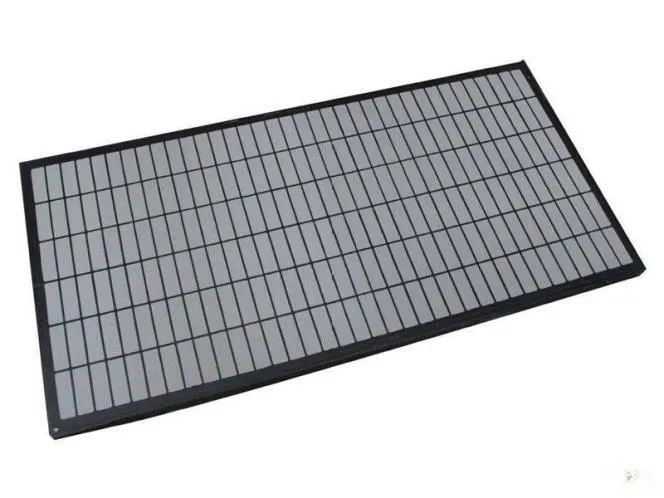- Industrial zone, South of Anping Town, Hengshui, Hebei, China.
- sales@hfpetromesh.com
- +86-18931809706
 Afrikaans
Afrikaans  Albanian
Albanian  Amharic
Amharic  Arabic
Arabic  Armenian
Armenian  Azerbaijani
Azerbaijani  Basque
Basque  Belarusian
Belarusian  Bengali
Bengali  Bosnian
Bosnian  Bulgarian
Bulgarian  Catalan
Catalan  Cebuano
Cebuano  Corsican
Corsican  Croatian
Croatian  Czech
Czech  Danish
Danish  Dutch
Dutch  English
English  Esperanto
Esperanto  Estonian
Estonian  Finnish
Finnish  French
French  Frisian
Frisian  Galician
Galician  Georgian
Georgian  German
German  Greek
Greek  Gujarati
Gujarati  Haitian Creole
Haitian Creole  hausa
hausa  hawaiian
hawaiian  Hebrew
Hebrew  Hindi
Hindi  Miao
Miao  Hungarian
Hungarian  Icelandic
Icelandic  igbo
igbo  Indonesian
Indonesian  irish
irish  Italian
Italian  Japanese
Japanese  Javanese
Javanese  Kannada
Kannada  kazakh
kazakh  Khmer
Khmer  Rwandese
Rwandese  Korean
Korean  Kurdish
Kurdish  Kyrgyz
Kyrgyz  Lao
Lao  Latin
Latin  Latvian
Latvian  Lithuanian
Lithuanian  Luxembourgish
Luxembourgish  Macedonian
Macedonian  Malgashi
Malgashi  Malay
Malay  Malayalam
Malayalam  Maltese
Maltese  Maori
Maori  Marathi
Marathi  Mongolian
Mongolian  Myanmar
Myanmar  Nepali
Nepali  Norwegian
Norwegian  Norwegian
Norwegian  Occitan
Occitan  Pashto
Pashto  Persian
Persian  Polish
Polish  Portuguese
Portuguese  Punjabi
Punjabi  Romanian
Romanian  Russian
Russian  Samoan
Samoan  Scottish Gaelic
Scottish Gaelic  Serbian
Serbian  Sesotho
Sesotho  Shona
Shona  Sindhi
Sindhi  Sinhala
Sinhala  Slovak
Slovak  Slovenian
Slovenian  Somali
Somali  Spanish
Spanish  Sundanese
Sundanese  Swahili
Swahili  Swedish
Swedish  Tagalog
Tagalog  Tajik
Tajik  Tamil
Tamil  Tatar
Tatar  Telugu
Telugu  Thai
Thai  Turkish
Turkish  Turkmen
Turkmen  Ukrainian
Ukrainian  Urdu
Urdu  Uighur
Uighur  Uzbek
Uzbek  Vietnamese
Vietnamese  Welsh
Welsh  Bantu
Bantu  Yiddish
Yiddish  Yoruba
Yoruba  Zulu
Zulu
- Afrikaans
- Albanian
- Amharic
- Arabic
- Armenian
- Azerbaijani
- Basque
- Belarusian
- Bengali
- Bosnian
- Bulgarian
- Catalan
- Cebuano
- Corsican
- Croatian
- Czech
- Danish
- Dutch
- English
- Esperanto
- Estonian
- Finnish
- French
- Frisian
- Galician
- Georgian
- German
- Greek
- Gujarati
- Haitian Creole
- hausa
- hawaiian
- Hebrew
- Hindi
- Miao
- Hungarian
- Icelandic
- igbo
- Indonesian
- irish
- Italian
- Japanese
- Javanese
- Kannada
- kazakh
- Khmer
- Rwandese
- Korean
- Kurdish
- Kyrgyz
- Lao
- Latin
- Latvian
- Lithuanian
- Luxembourgish
- Macedonian
- Malgashi
- Malay
- Malayalam
- Maltese
- Maori
- Marathi
- Mongolian
- Myanmar
- Nepali
- Norwegian
- Norwegian
- Occitan
- Pashto
- Persian
- Polish
- Portuguese
- Punjabi
- Romanian
- Russian
- Samoan
- Scottish Gaelic
- Serbian
- Sesotho
- Shona
- Sindhi
- Sinhala
- Slovak
- Slovenian
- Somali
- Spanish
- Sundanese
- Swahili
- Swedish
- Tagalog
- Tajik
- Tamil
- Tatar
- Telugu
- Thai
- Turkish
- Turkmen
- Ukrainian
- Urdu
- Uighur
- Uzbek
- Vietnamese
- Welsh
- Bantu
- Yiddish
- Yoruba
- Zulu
trench gratings
Understanding Trench Gratings Essential Components for Efficient Drainage Systems
Trench gratings are crucial elements in modern drainage systems, designed to manage stormwater runoff and prevent flooding. These structures serve multiple purposes in various environments, including urban areas, highways, industrial sites, and even recreational spaces. By channeling water away efficiently, trench gratings help maintain safety, protect infrastructure, and improve water quality.
At their core, trench gratings consist of a series of bars or slats that form a cover over a trench, which is usually a linear drainage channel. The primary function of these gratings is to allow water to flow into the trench while keeping solid debris out. This functionality is vital in preventing blockages that can lead to water pooling and potential flooding.
The design of trench gratings varies depending on the specific application and environment
. They are typically made from durable materials such as steel, fiberglass, or polymer, which provide strength and longevity. The choice of material often depends on factors like load-bearing requirements, corrosion resistance, and aesthetic considerations. For instance, stainless steel gratings are commonly used in industrial settings where resistance to harsh chemicals is necessary, while lighter-weight materials may be more appropriate for residential areas.trench gratings

Another critical aspect of trench gratings is their load capacity. They are engineered to withstand various kinds of traffic, from pedestrian footfall to heavy vehicular loads. The load rating of a grating should be carefully selected based on its intended use to ensure safety and reliability. In public spaces, for example, gratings must meet specific standards to accommodate the weight of emergency vehicles.
Moreover, trench gratings come in various designs, including slotted, gritted, and perforated options. Each design has its benefits, and the choice often depends on the specific drainage requirements of the area. Slotted gratings, for instance, provide efficient water entry while minimizing debris accumulation, making them ideal for areas with high pedestrian traffic. On the other hand, gritted grates may offer enhanced slip resistance, improving safety in wet or inclement conditions.
In addition to their functional benefits, trench gratings can also be designed to complement the surrounding landscape. Many manufacturers offer customizable options, allowing for a range of finishes and colors. This flexibility enables urban planners and designers to create cohesive and aesthetically pleasing environments while ensuring effective water management.
In conclusion, trench gratings are indispensable for effective drainage systems. They play a vital role in managing water runoff, enhancing safety, and preserving urban infrastructure. The combination of functionality, durability, and aesthetic appeal makes trench gratings a valuable asset in both residential and commercial settings. As we continue to prioritize sustainable urban design, the importance of properly designed trench gratings will undoubtedly grow.
-
Welded Steel Bar Grating: The Rugged Industrial Flooring Solution Built for Load and LongevityNewsJun.24,2025
-
Steel Walkway Grating: Reliable, Resilient, and Built for Every StepNewsJun.24,2025
-
Shale Shaker Screen for Sale: Optimize Drilling Efficiency with Precision Screening PowerNewsJun.24,2025
-
Shaker Screen for Sale: Elevate Your Drilling Efficiency with Durable Separation SolutionsNewsJun.24,2025
-
Press Locked Steel Grating: Industrial Strength with Precision Fit for Heavy-Duty ApplicationsNewsJun.24,2025
-
Perimeter Safety Netting: The Critical Safety Upgrade for Every HelipadNewsJun.24,2025